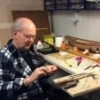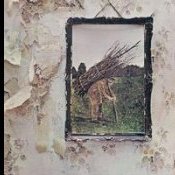HOLIDAY DONATION DRIVE - SUPPORT MSW - DO YOUR PART TO KEEP THIS GREAT FORUM GOING! (83 donations so far out of 49,000 members - C'mon guys!)
×

Bob Cleek
-
Posts
3,374 -
Joined
-
Last visited
Reputation Activity
-
 Bob Cleek got a reaction from mtaylor in Gutermann Polyester thread for making rope.
Bob Cleek got a reaction from mtaylor in Gutermann Polyester thread for making rope.
Thanks a million for the receipe! That saves tons of time experimenting.
-
 Bob Cleek got a reaction from mtaylor in Micro-Make Variable Speed Drill Press - Comments good/bad/ugly!
Bob Cleek got a reaction from mtaylor in Micro-Make Variable Speed Drill Press - Comments good/bad/ugly!
Just make sure it has a very good chuck and/or capacity for collets. When you get down to the very fine drill bits like we use for modeling, the slightest bit out of true, or a little wobble, and the bit will snap. Anybody can make a cheap small drill press, but accuracy to high tolerances costs money. An x-y table will be keenly appreciated, too, so add the cost of that to the package.
-
 Bob Cleek got a reaction from Hank in Micro-Make Variable Speed Drill Press - Comments good/bad/ugly!
Bob Cleek got a reaction from Hank in Micro-Make Variable Speed Drill Press - Comments good/bad/ugly!
Just make sure it has a very good chuck and/or capacity for collets. When you get down to the very fine drill bits like we use for modeling, the slightest bit out of true, or a little wobble, and the bit will snap. Anybody can make a cheap small drill press, but accuracy to high tolerances costs money. An x-y table will be keenly appreciated, too, so add the cost of that to the package.
-
 Bob Cleek reacted to mtaylor in Cheap Chinese Table Saw...
Bob Cleek reacted to mtaylor in Cheap Chinese Table Saw...
Kickback is always a "not good" thing. I learned to stand off to the side to use the saw and even the mini table saws can cause you body damage if they kick back.
-
 Bob Cleek reacted to Jaager in Micro-Make Variable Speed Drill Press - Comments good/bad/ugly!
Bob Cleek reacted to Jaager in Micro-Make Variable Speed Drill Press - Comments good/bad/ugly!
It seems fairly expensive to me. I get acceptable results from a EuroTool DRL 300. I have only used wire gauge bits with it. I added an XY table that cost more than the drill, but now I see that I could have gotten the same thing from Ali Express for ~$40. The price has jumped from $80 to $110. Tariff result is my guess. I would sooner use a $100 machine if I was going to break the rules and use it for lite milling on wood, than a $350 machine. Neither has bearings for lateral force. I also use a momentary foot switch with it. For drilling wood, I do not see the benefit of a bells and whistle level speed control. A sharp cutting edge is more important. Isn't the speed control a metal being worked thing- Al vs Fe vs CU?
If you are going to use it to make tools and will be milling metals, a for real milling machine would be reasonable expenditure. For wood, you do not even need accuracy. You do need precision though - i.e. once you determine what and where, that it repeats doing that exactly the same every time. My DRL-300 will do that. My sin is that I use a bit until it bends or breaks. Some burning in a #70 hole does not bother me.
-
 Bob Cleek reacted to Chuck in Gutermann Polyester thread for making rope.
Bob Cleek reacted to Chuck in Gutermann Polyester thread for making rope.
I do want to encourage everyone to take up the skill of making their own rope. Hopefully I will have more ropewalks in stock soon. I am biased but believe the type of manul ropewalk like I offer is the best and quickest way to make it. But whatever ropewalk you choose, I want to try and make it easier for folks.
Since I have been making rope available for a few customers on a custom basis using Mara for several years now, I would like to share the recipe for making the various sizes I offer this material in to my clients. Now the sizes you end up with may vary a bit depending on your technique and how tightly or loosely you lay up the rope. But as you can see from above, a tightly laid up rope is much more realistic. So when using MARA try and give more twists to the initial strands than you think. And then you will be able to twist those strands together more tightly in the opposite direction to make better looking rope.
So here is my recipe using MARA for the sizes I offer.
TPS - threads per strand.
S - Number of strands ....or hooks on the ropewalk.
.008 rope......mara 120......1 TPS x 3S very tightly laid up
.012 rope.......mara 100.......1 TPS x 3S very tightly laid up
.018 rope......mara 100.........1 TPS x 4S
.025 rope......mara 70.........1 TPS x 4S
.035 rope......mara 30.........1 TPS x 4S
.045 rope......mara 30...........2 TPS x 3S
.055 rope......mara 30.........2 TPS x 4S
.065 rope......mara 30.........3 TPS x 4S
.080 rope......mara 30..........4 TPS x 4S
.095 rope.......mara 30.........5 TPS x 4S
Your results may vary as I said. BUT after you lay up your rope, make sure you tie a knot on each end. Poly wants to unravel. Remember Morope!!! Its crazy. Then get yourself a toaster oven....or use a real oven. Wind your rope around a metal sheave or pully. I have these!!!! Garage door pulleys. They work fantastic.
Then place these in your toaster oven at 350 degrees for no more than 5 minutes. If you approach 400 degrees yo will make a mess. The poly will melt. After much trial and error this is the best temperature......also, no longer than 5 minutes because it will also change the way the rope looks and feels. Let it cool off on a rack. Now you can cut the ends with a sharp blade without any worry that it will unravel. This recipe and process makes perfect rope out of 100% polyester like Guterman MARA.
The best place to buy it in the USA....is Waywak
https://www.wawak.com/Thread/Thread-By-Brand/Gutermann/
Gutermann also makes other sizes, like MARA 50. A great size for making rope. But this must be bought from the MFG in large amounts. I have a bunch of this and it changes the recipe above. But the regular stuff you guys can get from Waywak use the recipe I have given.
Hope this helps.........start making your own rope. Its rewarding and FUN!!!!!! Untill you have to make 1000 feet per day for seven days every week.
-
 Bob Cleek got a reaction from shipman in Gutermann Polyester thread for making rope.
Bob Cleek got a reaction from shipman in Gutermann Polyester thread for making rope.
This is very interesting, important, and helpful information. Those of us "of a certain age," are keenly aware of how short a span of time 35 years is. I have a 1/4" scale pilot schooner model (cased) I built forty years ago which is in excellent condition despite the limitations of materials technology available at that time. She is rigged with cotton thread.
Your experience with polyester thread mirrors my own experience using it (mistakenly) to sew full-scale marine canvas work. It lasted less than a year or so and then turned to crumbles. Prompted by your post, I did a bit of research and found to my surprise that polyester thread isn't recommended for use in UV exposed applications and in such only has a life-expectancy of about two years according to the manufacturers. Surely, polyester thread that is protected from direct UV exposure will last longer, but "longer" is a relative thing in this instance. Like most plastics, it will deteriorate over time, characteristically by becoming increasingly brittle, UV or not. The present state-of-the-art thread in terms of longevity is supposedly polytetrafluoroethylene (PTFE) thread. PTFE is basically Teflon. It's also the same stuff that white plumber's thread tape is made of. The manufacturers claim it is impervious to UV exposure and has an unlimited lifespan. It has a lower strength rating than polyester thread, but polyester thread's strength rapidly decreases as it ages until it is quickly less strong than PTFE thread. More recently, similarly "bulletproof" threads have become available, such as Kevlar and Nomex thread which are extremely strong and fire-resistant, respectively.
As always, there's a catch. PTFE thread, which is the present "gold standard" costs three to ten times what polyester thread does. Kevlar and Nomex are even more expensive than that. Moreover, all of these polymer (plastic) threads are extremely difficult to color and generally require coloring at the time the fibers are manufactured, adding pigment when the plastic is compounded. This stuff can't be dyed by dipping it in strong coffee, to say the least. As the issue raised in this thread is primarily the increasing cost of natural fiber thread, it quickly becomes apparent that "you get what you pay for" and natural fiber, even at higher prices than in the past, is the most cost-effective alternative for getting the job done right.
From what I can see, polyester thread is about the last thing I'd ever want to use on anything I wanted to last. It is definitely not "archival." I'm with you. I can't for the life of me figure out why a respected museum would specify polyester thread for rigging models. Chuck apparently "has to dance with the girl he brought," because the museum which "pays the piper gets to call the tune," but if I were faced with similar circumstances, I'd make sure I'd made a record by sending them written notice that while the job would be done exactly as specified, I could not warrant the suitability of the materials specified. Nobody wants to have a customer coming back to bite you in the butt three or five years later, as they always do when their otherwise contraindicated specified method or material fails. That's been the case so often in boatyards with customers who insist the newest untried product on the market they saw advertised in a boating magazine be used for expensive maintenance jobs that the yards routinely "paper" the customer to make sure they are covered if the new coating or whatever turns out to be a dud.
-
 Bob Cleek got a reaction from Ponto in Scroll Saw or band saw... help me pick the right one.
Bob Cleek got a reaction from Ponto in Scroll Saw or band saw... help me pick the right one.
I've reviewed the published comparisons. Dewalt is the highest rated of the mid-price-range scroll saws. Hegner is at the top of any list, along with a couple of others, all highly-priced accordingly.
-
 Bob Cleek got a reaction from bruce d in Scroll Saw or band saw... help me pick the right one.
Bob Cleek got a reaction from bruce d in Scroll Saw or band saw... help me pick the right one.
You'll probably find that any sort of vibration damper between the saw and the table it is on will dampen the table's vibration, but not the saw's vibration! I think you'll find that bolting the saw down to the most solid platform youi can find or devise will get you as close to no vibration as you can get. Mass trumps vibration.
-
 Bob Cleek got a reaction from Moxis in Scroll Saw or band saw... help me pick the right one.
Bob Cleek got a reaction from Moxis in Scroll Saw or band saw... help me pick the right one.
I've reviewed the published comparisons. Dewalt is the highest rated of the mid-price-range scroll saws. Hegner is at the top of any list, along with a couple of others, all highly-priced accordingly.
-
 Bob Cleek reacted to Moxis in Scroll Saw or band saw... help me pick the right one.
Bob Cleek reacted to Moxis in Scroll Saw or band saw... help me pick the right one.
So far I have thought that the best scroll saw ever is Hegner. https://www.hegner.co.uk/products/machine-tools/scrollsaws.html It could be interesting to see a comparison between Dewalt and Hegner.
-
 Bob Cleek got a reaction from mtaylor in Scroll Saw or band saw... help me pick the right one.
Bob Cleek got a reaction from mtaylor in Scroll Saw or band saw... help me pick the right one.
I had the same question. I have one of the same Craftsman scroll saws you do. Somebody gave it to me for free. (Now, I'm looking for somebody else to give it to for free!) It works decently enough for basic scroll sawing, assuming the correct blades are used, but it's a low-end machine and it has a lot of vibration which makes sawing to tight tolerances difficult and sawing for any lenght of time fatiguing. . It's on a Craftsman stand designed for it. I C-clamped the leg of the stand to the solid post of my workbench and that reduced the vibration significantly. To minimize the vibration on them to the extent possible, they really have to be bolted down to something rock sold, like a heavy workbench. An ordinary table is better than nothing, but it won't get you all the way there.
My Sakura scroll saw, on a similar stand, has a double parallel link arm and practically no vibration whatsoever. The difference is about five or six hundred bucks between an "entry level" Craftsman and a top of the line "professional" machine. I got the Sakura near-new-used for less than the "entry level" saws cost. Used tools in good shape are often amazingly inexpensive compared to new-retail prices. It pays to keep an eye on the online classifieds. You won't see as many on eBay because the shipping makes them too expensive to sell with the shipping costs. What you are paying for in the high-end scroll saws, basically, is minimal vibration that permits easier accurate cutting and minimal fatigue in use.
You may find this site on scroll saws helpful : https://scrollsawhero.com/the-ultimate-getting-started-guide-to-scroll-saws/#Arm_Type
-
 Bob Cleek reacted to bruce d in Scroll Saw or band saw... help me pick the right one.
Bob Cleek reacted to bruce d in Scroll Saw or band saw... help me pick the right one.
Jorge,
For what it is worth, here is my opinion: do not attempt to use the saw (or judge it) until you have bolted it down solidly to a worktop. Do not use 'vibration dampening' rubber feet, just tighten it down directly to the bench. Get some good blades. Then, set it up from scratch following the makers' instructions.
Once that is done you will be able to figure out if the saw is adequate for your needs. Bear in mind that if you replace the saw on the basis of current performance, you will have to follow the process above to set up your new one properly anyway.
HTH,
Bruce
-
 Bob Cleek got a reaction from Justin P. in Scroll Saw or band saw... help me pick the right one.
Bob Cleek got a reaction from Justin P. in Scroll Saw or band saw... help me pick the right one.
I had the same question. I have one of the same Craftsman scroll saws you do. Somebody gave it to me for free. (Now, I'm looking for somebody else to give it to for free!) It works decently enough for basic scroll sawing, assuming the correct blades are used, but it's a low-end machine and it has a lot of vibration which makes sawing to tight tolerances difficult and sawing for any lenght of time fatiguing. . It's on a Craftsman stand designed for it. I C-clamped the leg of the stand to the solid post of my workbench and that reduced the vibration significantly. To minimize the vibration on them to the extent possible, they really have to be bolted down to something rock sold, like a heavy workbench. An ordinary table is better than nothing, but it won't get you all the way there.
My Sakura scroll saw, on a similar stand, has a double parallel link arm and practically no vibration whatsoever. The difference is about five or six hundred bucks between an "entry level" Craftsman and a top of the line "professional" machine. I got the Sakura near-new-used for less than the "entry level" saws cost. Used tools in good shape are often amazingly inexpensive compared to new-retail prices. It pays to keep an eye on the online classifieds. You won't see as many on eBay because the shipping makes them too expensive to sell with the shipping costs. What you are paying for in the high-end scroll saws, basically, is minimal vibration that permits easier accurate cutting and minimal fatigue in use.
You may find this site on scroll saws helpful : https://scrollsawhero.com/the-ultimate-getting-started-guide-to-scroll-saws/#Arm_Type
-
 Bob Cleek reacted to davec in Scroll Saw or band saw... help me pick the right one.
Bob Cleek reacted to davec in Scroll Saw or band saw... help me pick the right one.
I use the band saw to slice billets from large blocks of wood. I put the billets through a thickness sander, then slice them into the final planks with a mini table saw. The band saw is nowhere near precise enough to cut final planks.
-
 Bob Cleek reacted to Jaager in Scroll Saw or band saw... help me pick the right one.
Bob Cleek reacted to Jaager in Scroll Saw or band saw... help me pick the right one.
I use a 9" bench top with the finest available blade (1/8") for scroll cutting. I just need to get sort of close. The blade has teeth with set. There is significant kerf and the face of the cut is rough. As long as the blade is sharp and the blade run is not jammed with scrap, the cut goes quickly. I added a Carter Stabilizer and with it I am not limited in radius. I can turn the work on a lot less than a dime. It about doubles the cost of a low end 9" saw. If you want to bull it out and finish with a disk or drum sander, a bench top band saw does the trick. I would not attempt anything fine or delicate using it. I would not use it for much of anything else though. If you intend to get into the milling from planks or logs, a bench top band saw is a very poor choice. That is a go big (14") or go home situation, unless you enjoy frustration.
-
 Bob Cleek reacted to davec in Scroll Saw or band saw... help me pick the right one.
Bob Cleek reacted to davec in Scroll Saw or band saw... help me pick the right one.
The saw that Chris posted about is the same Dewalt I use. It is awesome- couldn't agree more.
-
 Bob Cleek reacted to bruce d in Scroll Saw or band saw... help me pick the right one.
Bob Cleek reacted to bruce d in Scroll Saw or band saw... help me pick the right one.
Jorge, is your saw bolted down?
-
 Bob Cleek reacted to davec in Scroll Saw or band saw... help me pick the right one.
Bob Cleek reacted to davec in Scroll Saw or band saw... help me pick the right one.
I have both a scroll saw and 14" band saw. While I bought the band saw with the intent of doing lots of things with it, the scroll saw has met my all my needs for precise cutting of small parts. I have a Dewalt, which I really like. There is some vibration (can't see how you could avoid having some), but not enough to affect ability to cut. The band saw gets left set up with a resaw blade to rip thin sheets when milling wood. Way safer than a table saw, so it was worth the investment for this alone. If I was only going to buy one tool, it would be the scroll saw. It could be replaced by a coping saw, but I have limited time to model, and cutting all the frames by hand would turn my projects from years to decades.
-
 Bob Cleek reacted to barkeater in Scroll Saw or band saw... help me pick the right one.
Bob Cleek reacted to barkeater in Scroll Saw or band saw... help me pick the right one.
For small piece work that you do with ship modelling I go with a scroll saw.
-
 Bob Cleek reacted to Gaetan Bordeleau in Scroll Saw or band saw... help me pick the right one.
Bob Cleek reacted to Gaetan Bordeleau in Scroll Saw or band saw... help me pick the right one.
scroll saw small delicate job, and precise job... when no vibration
band saw big jobs rough and thick
-
 Bob Cleek got a reaction from Jorge Hedges in Bandsaws
Bob Cleek got a reaction from Jorge Hedges in Bandsaws
I am, too. There's nothing like "old 'arn." And the price is right!
-
 Bob Cleek got a reaction from Jorge Hedges in Bandsaws
Bob Cleek got a reaction from Jorge Hedges in Bandsaws
If your emphasis is on accuracy, a band saw isn't going to be a machine where you'll readily find it. On a band saw, "accuracy" is dependent more upon the operator's skill than anything else. If "tight curves" are anticipated, certainly at modeling scales, a good quality scroll saw is the tool for the job. The "tightness of curves" or "minimum radius of cut" of a given band saw blade can cut is dependent on the width of the blade. As indicated on the chart below, a 1/8" wide band saw blade will only cut minimum radius of 3/16" and, while I've never seen a 1/8" band saw blade, I expect it's a rare bird indeed. I expect it would require a band saw designed to do such fine work. On a standard 14" band saw, I expect a 1/8" blade would be quite prone to breaking. A scroll saw, on the other hand, is capable of cutting radii equal to half the width of the blade itself.
Blade Width (Inches) Minimum Radius (Inches) 1/8 3/16 3/16 5/16 1/4 5/8 3/8 1-1/2 1/2 2-1/2 5/8 4 3/4 5-1/2 1 7
It's a matter of preference, price point, and space available, I suppose, but, in my opinion, small bench top band saws aren't really all that practical. A good scroll saw will serve much better for short radius cutting, although perhaps with slightly less throat depth, which generally isn't an issue with tight curves. A table saw will cut straight lines easier than any band saw, too. For larger work, however, a "standard" 14" or larger band saw is really required and is also capable of accurate re-sawing if properly set up. As to which one to buy, the price points are generally indicative of quality. As with many stationary power tools these days, the retail distributors all sell essentially the same models, all built at the Revolutionary People's Patriotic Machine Tool Collective somewhere in China, but there is a difference in fit and finish, depending upon the distributor's specifications. When it comes to things like band saws, the used market is also worth checking out. It's not unusual to see quality machines in decent condition selling used for a fraction of their original price. Neither is it unusual to find older machines which are of much higher quality than the models now selling new.
-
 Bob Cleek got a reaction from JeffT in Complete N00b Starting Out
Bob Cleek got a reaction from JeffT in Complete N00b Starting Out
"Experience begins when you start." Your beading and crocheting experience will have application in rigging ships, so you're already on your way. Enjoy!
Just start with something very simple and do the best job you can on that. There is a learning curve. The most common mistake most all make is biting off way more than you can chew. Square-rigged ship models aren't really the best choice for beginners. Try starting with a fore and aft rig first and work up to the complex rigs. (Don't ask me how I know this! Most of all of us have been there.)
-
 Bob Cleek got a reaction from mtaylor in Complete N00b Starting Out
Bob Cleek got a reaction from mtaylor in Complete N00b Starting Out
"Experience begins when you start." Your beading and crocheting experience will have application in rigging ships, so you're already on your way. Enjoy!
Just start with something very simple and do the best job you can on that. There is a learning curve. The most common mistake most all make is biting off way more than you can chew. Square-rigged ship models aren't really the best choice for beginners. Try starting with a fore and aft rig first and work up to the complex rigs. (Don't ask me how I know this! Most of all of us have been there.)








